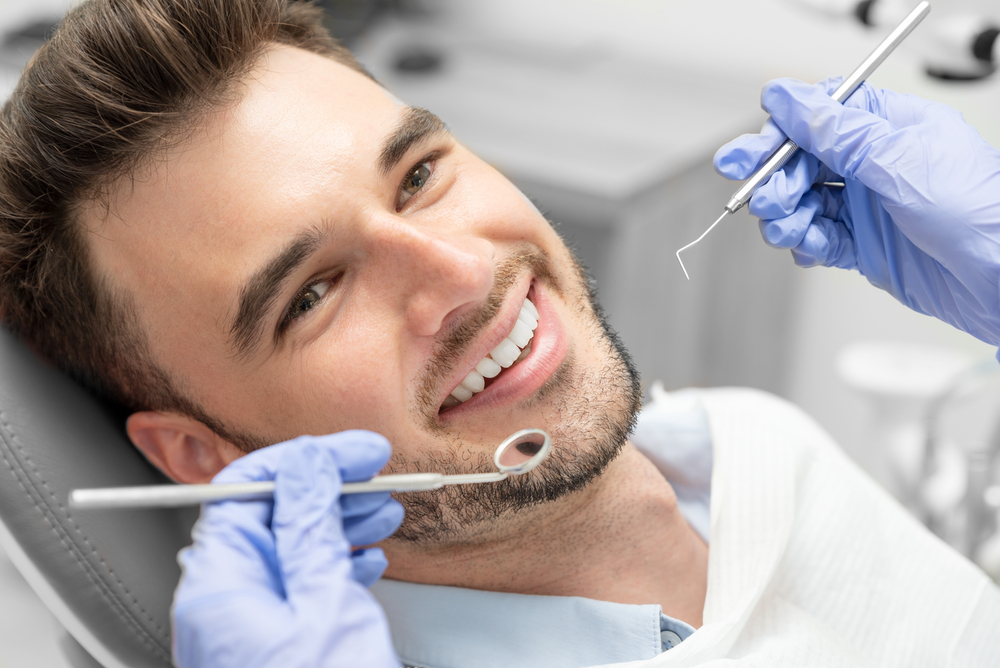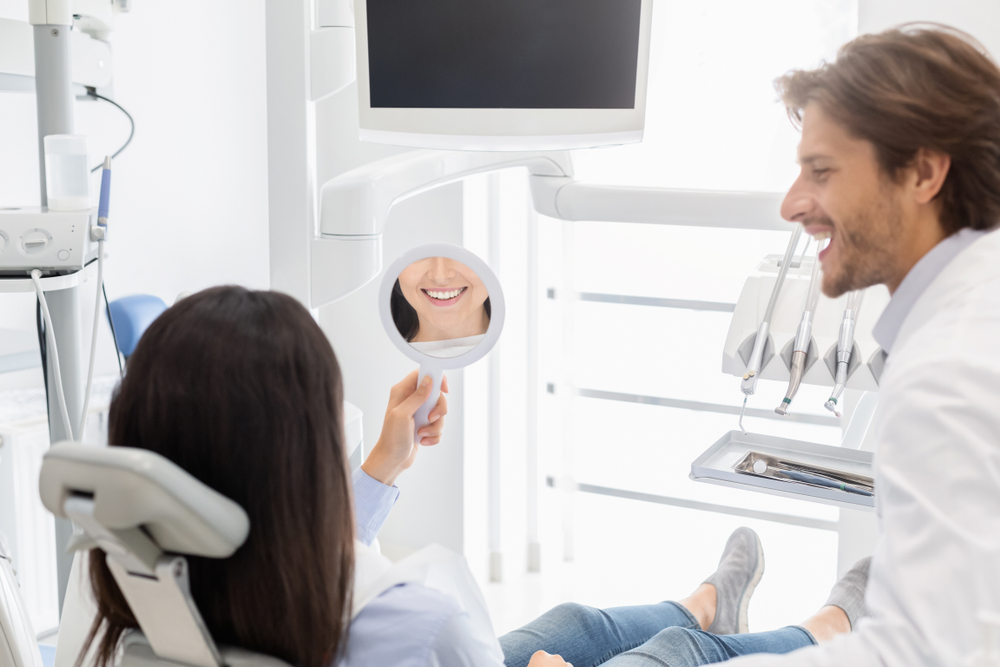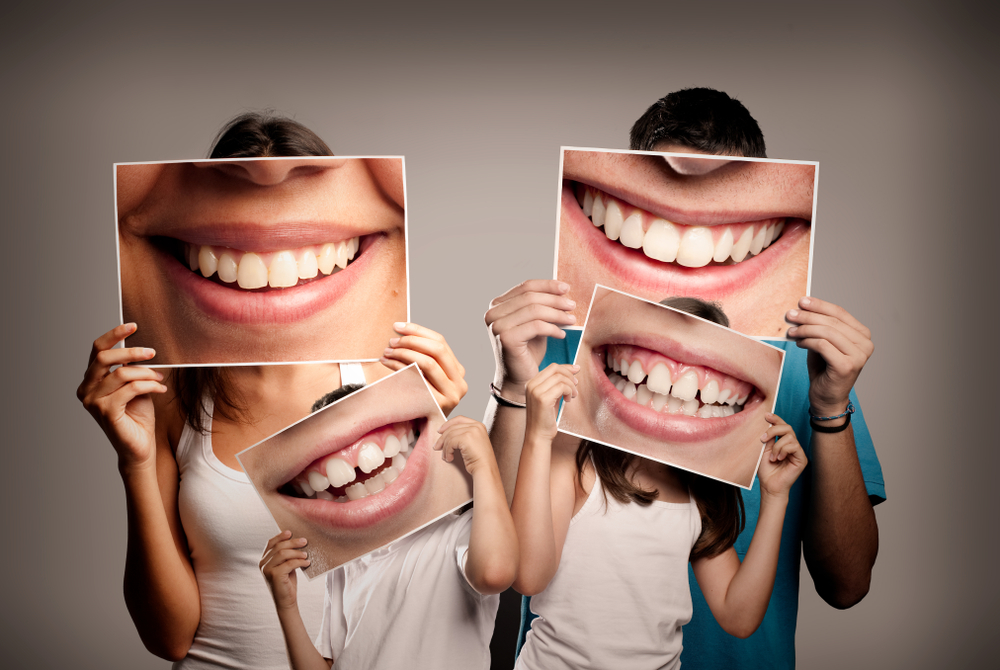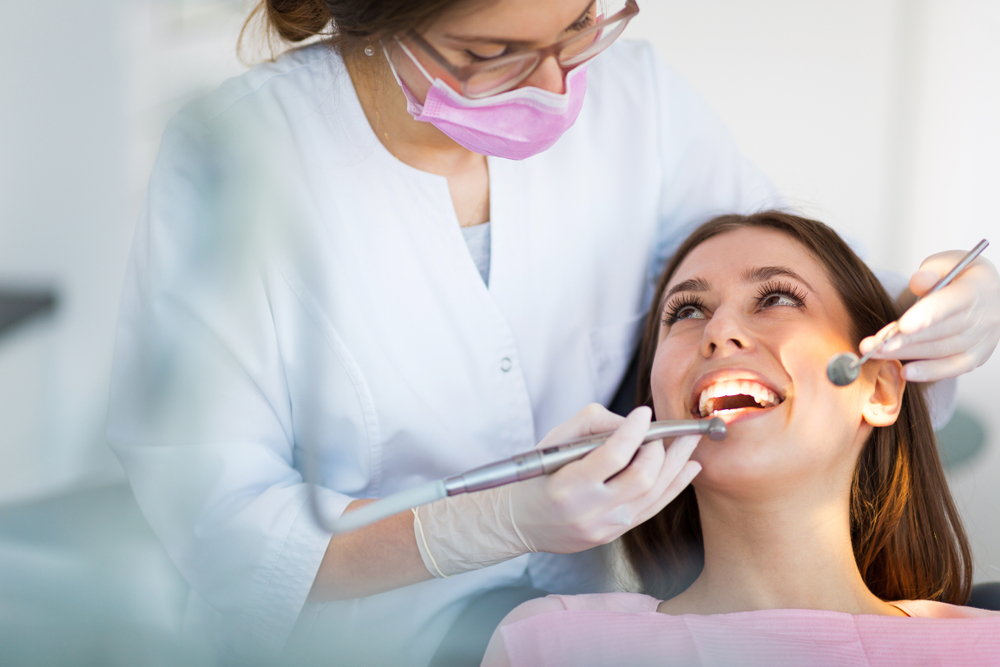Category: Dental Exam and Cleaning
Cost of Dental Exam & Teeth Cleaning in Litchfield MN
What is included in the cost of professional teeth cleaning?
No matter how strict your at-home oral hygiene routine is, there’s no brushing technique that is good enough to prevent the build up and hardening of plaque (tartar), over time. That is why dental professionals recommend that you visit your dentist once or twice a year for professional cleaning and dental examination to assess the condition of your teeth, gums, and mouth. Teeth cleaning or prophylaxis take place above the gums, though your dentist may recommend a deep clean (scaling and root planing below the gumline) if you have gum disease.
Breaking down the cost of teeth cleaning
The national average costs of popular dental services such as exams and cleaning vary from one region to the other, and from dentist to dentist. It also depends on the number of services that will be performed during your visit.
X-ray are only necessary to assess the extent of periodontal disease before deep cleaning or to check for other problems, but are not a must for a preventive procedure like deep cleaning.
Your dentist will determine which of these preventive procedures are necessary based on your dental exam, after which they will be done in a single appointment together with your dental cleaning.
Considering that dental checkups and professional cleaning are affordable for most people, and free for those with a dental insurance plan, they should be performed regularly as recommended by dental professionals, which is every six months, to ensure your optimal oral health.
Types of Dental Cleanings in Litchfield MN
Scheduled professional teeth cleaning is a key component of your preventative dental care to maintain optimal dental health and minimize the risk of gum disease and tooth decay. The American Dental Association recommends that dental cleanings be performed every six months by a dental practitioner. However, some people may require more frequent cleanings depending on their risk factors.
Your dentist may recommend one of the following types of dental cleanings after examining your teeth and gums:
1. Prophylaxis (prophy)
This is commonly referred to as “teeth cleaning”, and involves the removal of accumulated plaque from your teeth, which cannot be removed by regular brushing at home. The process also includes tooth polishing, and should be done every 8 to 16 weeks. Generally, a good candidate for prophylaxis should have firm, pink gums with no bleeding or gum pockets over 3mm.
2. Full Mouth Debridement
If your teeth are not professionally cleaned for more than a year, your teeth may have heavy plaque and tartar (calculus) build-up. In such a case, regular prophylaxis may not be sufficient. So your dental professional may recommend full mouth debridement using hand tools and a micro-ultrasonic scaler to remove the plaque and calculus from your teeth and gums, and restore the health of your mouth.
3. Scaling and Root Planing
Commonly referred to as “deep cleaning”, this procedure is usually recommended for patients who exhibit signs of periodontal disease, such as deeper gum pockets (over 3mm), inflammation and bleeding gums, accumulation of plaque and tartar below the gumline, and/or loss of bone tissue supporting the teeth.
4. Periodontal Maintenance
Following treatment for periodontal disease through scaling and root planing or periodontal surgery, your dental professional may recommend this specialized cleaning every 8 – 12 weeks as part of your periodontal treatment follow up to reduce the risk of gum disease recurrence.
Schedule Your Dental Cleaning Today
The right type of dental cleaning in Litchfield MN will be determined by your dental professional depending on the clinical condition of your teeth and gums, as well as your risk and history of periodontal disease and treatment. Please visit your dentist to discuss your cleaning needs today.
Cost of Dental Exam & Teeth Cleaning in Litchfield MN
Routine dental checkups and professional cleaning form a vital part of preventative oral care. These preventive visits may also include additional services, such as X-rays, fluoride application, cancer examination, and so on depending on your personal dental care needs and your last oral checkup. Combined with a proper at-home oral care routine, these visits help you maintain optimal dental health, reducing the risk of tooth loss and expensive dental procedures.
But how much can you expect to pay for these routine dental visits?
The national average costs of popular dental services such as exams and cleaning vary from one region to the other, and from dentist to dentist.
If you have a dental insurance plan, your cost of preventive care may be considerably lower, or nothing more than your monthly premium. Since dental insurance plans typically emphasise preventative care, most of them cover two annual dental checkups. That said, you should consult your dental insurance company to determine the various dental services covered by your policy, as well as the extent of the coverage.
Final note
Dental insurance can provide savings when receiving preventive care services such as routine exams, professional cleanings, sealants for children, topical fluoride, and x-rays (usually one set per year). The frequency and benefits for each service depend on the type of plan you have, so you should always read the plan details carefully. Even if your employer does not offer dental insurance as a perk, you can purchase an individual or family plan to enjoy reduced cost of most preventive and restorative dental treatments.
Dental Exam & Cleaning Near Me, Litchfield MN
Why should you schedule your exam and cleaning today?
Both the bi-annual exams and cleanings are expected for optimal oral health. Maintaining a strong base for oral health is important to prevent disease or decay. Keeping up with these appointments is vital in obtaining exceptional oral health.
A dental exam is a routine procedure. It is generally quick, easy.
Dental Exam
The exam at your dental appointment consists of a few bites, and one open-wide. That’s it! The process for checking the state of your teeth is rather simple. Depending on what they find during the checkup, they may want to immediately take X-rays as well.
Dental Cleaning
A routine cleaning at the dentist’s office is more effective than any toothbrush. Following the removal of plaque and tartar, your dental practitioner will do deep clean that is possible with a high-powered electric brush. Your dentist will then floss your teeth for you and finish off by giving you a fluoride treatment so that cavities are protected against for months on end! You’ll leave feeling fresh not only in appearance but also internally.
What’s Involved In A Dental Exam & Cleaning? | Litchfield MN
Scheduling your exam and cleaning today will help protect your dental health, which is important in maintaining exceptional oral health. The most basic appointment involves a bi-annual cleaning that maintains the strength of our teeth. Regular appointments are necessary to prevent diseases from occurring, as well as decay on our teeth.
What to Expect
Routine dental exams are generally quick and easy. You’ll likely be in and out of the office within 45 minutes to an hour.
Dental Exam
The exam portion of your appointment is rather easy and a breeze to go through. The dentist checks for dental issues by conducting some “bite downs” and “open wides”, as well as possibly taking X-rays depending on the individual case.
Dental Cleaning
The exam that includes a cleaning is more effective than any toothbrush. Following the removal of plaque and tartar, your dentist will conduct their deepest clean possible with a high-powered electric brush. Your dentist will then floss for you and finish off the session with fluoride treatment which protects teeth against cavities for months on end! You’ll leave looking sharp but also feeling fresh!
Tooth Infection Treatment in Litchfield MN
A tooth infection occurs when bacteria infects the inside of your tooth (pulp), resulting in a condition known as pulpitis. If not treated promptly, the infection may spread to surrounding areas of the tooth, causing pus to collect in the tooth or surrounding gum pockets. This is known as an abscess.
Tooth infections can be caused by untreated tooth injuries, decay, or previous dental work, resulting in either periapical abscess, which causes a pocket of pus to form at the tip of the tooth root, or periodontal abscess, which causes a pocket of pus forms at the side of the tooth root to form a periodontal abscess.
Symptoms of a tooth infection
While pulpitis causes tooth sensitivity, especially when consuming hot or cold foods and drinks, dental abscesses tend to be very painful, and can even affect your ability to perform basic daily activities. If left untreated, the problem will continue to get worse and destroy the bone tissue around the abscess. If you have a tooth infection, you may experience:
- Throbbing pain in the tooth that gets worse with time
- Pain in the surrounding areas, such as the ear, lower jaw, and neck on the same side as the infected tooth
- Soreness of infected tooth and surrounding area when biting
- Pain in the teeth when consuming hot or cold foods and drinks
- Bad taste in your mouth
- Fever and general feeling of being unwell
- Difficulty opening your mouth and swallowing
Treatment for tooth infections
If you suspect that you have a tooth infection, you should visit your dentist immediately for diagnosis and/or emergency treatment. If it’s not possible to see a dentist right away, your doctor may recommend some over-the-counter medication to help with the pain. Antibiotics may also be administered to stop the spread of the infection, especially if your face is swollen, have a fever, or currently managing other health problems that weaken your immune system.
Cases of dental abscess are treated by draining the pus and resolving the infection by removing the damaged tissue from the pulp. Depending on the extent of tooth damage, the tooth can be saved with root canal therapy and then capped with a dental crown to strengthen it. Alternatively, the tooth may have to be extracted and then replaced with a partial denture, bridgework, or dental implant. Please visit your dentist for proper diagnosis and tooth infection treatment.
Tooth Pain Relief Treatment in Litchfield MN
Tooth pain can be felt in or around a tooth when chewing, consuming hot or cold food or drinks, or even when at rest. Toothaches tend to occur as a result of some kind of tooth trauma or a dental condition, such as a cracked tooth, dental cavity, advanced gum disease, or an exposed tooth root. However, you may also experience tooth pain due to disorders of the jaw joint, known as the temporomandibular joint. The severity of the pain can be mild, sharp, or excruciating, and can vary in occurrence, from periodic to chronic.
Tooth pain may be caused by:
- Dental caries or cavities
- Dental abscess
- Periodontal disease
- Tooth root sensitivities
- Impacted tooth
- Temporomandibular joint (TMJ) disorders
It’s important that you visit a dentist for a thorough examination, which includes a visual examination of the tooth and dental X-rays, to diagnose the cause of the pain and recommend an appropriate long-term treatment. Keep in mind that some toothaches may be caused by a problem that doesn’t originate from a tooth or the jaw. Pain around the teeth and jaws can be a sign of diseases of the ears (such as ear infections), heart (such as heart attack or angina), and sinuses (air passages of the cheekbones). In such cases, your dentist may refer you to a doctor or specialist to diagnose medical illnesses causing the tooth pain.
Treatment for tooth pain
Depending on the diagnosis, your dentist may recommend the use of over-the-counter pain relief medication, extraction of an impacted tooth, topical fluoride application for minor tooth sensitivities, a dental filling for small and shallow cavities, or a dental crown for larger cavities. For cases that involve an injured pulp or infection, then you may require root canal therapy or extraction of the affected tooth followed by tooth replacement. Cases involving advanced gum disease may require thorough cleaning, as well as scaling and root planning, combined with improved oral hygiene practices.
Schedule a Consultation Today!
Call our dental practice today to schedule an appointment with our experienced dentists for tooth pain relief treatment. We offer affordable, reliable, and highly professional dental services. Our trusted dentists will be happy to meet with you and discuss your available dental options.
Tooth Abscess Pain Relief & Dental Treatment in Litchfield MN
Infected teeth are caused by bacteria penetrating through your tooth enamel and dentin into the pulp space to cause an abscess (pulpitis), such that pus begins to collect within. It can also occur when bacteria gets trapped in deep gum pockets. This results in a number of unpleasant symptoms, including:
- Throbbing pain in the tooth
- Pain in the surrounding areas, such as the ear, lower jaw, and neck
- Soreness of infected tooth and surrounding area when biting
- Pain in the teeth when consuming hot or cold foods and drinks
- Bad taste in your mouth
- Fever and general feeling of being unwell
- Difficulty opening your mouth and swallowing
Types of tooth abscesses
If you suspect that you have a tooth infection, it is often best to visit your dentist immediately for diagnosis and/or emergency treatment.Your dentist may discover one of two types of tooth infections:
- Periapical abscess – It is the most common type of tooth infection. It happens when bacteria enters the enamel and begins to eat away at it, reaching the pulp inside the tooth. A bacterial infection in the tooth pulp causes pus to form around the root of the tooth, enlarging it.
- Periodontal abscess – This type of abscess is the result of untreated gum disease. The infected gum tissue becomes inflamed and begins to migrate away from the tooth, creating a space that is difficult to clean. Ultimately, a pocket of pus forms at the side of the tooth root to form a periodontal abscess.
Treatment options
Dental abscesses are often treated by removing the pus and resolving the infection. Additional treatments may include:
- Over-the-counter medication to help with the pain
- Antibiotics are used to stop the spread of infections.
- Root canal therapy and then capped with a dental crown to strengthen it
- Tooth extraction and replacement with a partial denture, bridgework, or dental implant.
Please visit your dentist for proper diagnosis and treatment.
Affordable Toothache Relief & Treatment Near Me, Litchfield MN
Toothaches are usually the result of tooth trauma or a dental condition, such as a cracked tooth, dental cavity, advanced gum disease, an exposed tooth root, or disorders of the jaw joint (temporomandibular joint). Pain can be either mild, severe or somewhere in-between, and it can vary from periodic to chronic.
Causes of tooth pain
The most common cause of dental pain is tooth decay, or cavities. Cavities are holes that form in the two outer layers of a tooth (tooth enamel and dentin) when you don’t brush your teeth properly, allowing acid in the mouth to erode them. If cavities are small in size, they may not cause any pain. However, as the cavity gets larger and deeper into the inner living tooth tissue (pulp), severe pain is felt when anything cold, hot, or sweet comes in contact with it.
Other causes of tooth pain include:
- Dental abscess – a tooth with a severe pulp injury can have an especially high risk of infection.
- Periodontal disease – bone loss and formation of deep gum pockets that cause gum infection and pain
- Tooth root sensitivities
- Impacted tooth
- Temporomandibular joint (TMJ) disorders – caused by arthritis, jaw injury from impact or recent dental work, or jaw muscle fatigue from habitually clenching and grinding teeth
Treatment for tooth pain
Depending on the diagnosis, your dentist may recommend one or more of the following treatments for a toothache:
- Over-the-counter pain relief medication
- Extraction of an impacted tooth
- Topical fluoride application for minor tooth sensitivities
- Dental filling for small and shallow cavities
- Dental crown for larger cavities
- Root canal therapy for cases that involve an injured pulp or infection,
- Tooth extraction of infected tooth followed by tooth replacement
- Teeth with advanced gum disease will need a thorough cleaning, as well as scaling and root planing in addition to improved tooth care habits.
The most important step is to visit a dentist for an examination of the mouth and teeth. An appropriate treatment may be suggested from that point.
Tooth Abscess Treatment Near Me, Litchfield MN
An abscessed or infected tooth is a dental problem caused by bacteria penetrating through your tooth enamel and dentin to reach the pulp (pulpitis), such that pus begins to collect within. It can also occur when bacteria gets trapped in deep gum pockets. This results in a number of unpleasant symptoms, including:
- Throbbing pain in the tooth
- Pain in the surrounding areas, such as the ear, lower jaw, and neck
- Soreness of infected tooth and surrounding area when biting
- Pain in the teeth when consuming hot or cold foods and drinks
- Bad taste in your mouth
- Fever and general feeling of being unwell
- Difficulty opening your mouth and swallowing
Types of tooth abscesses
If you suspect that you have a tooth infection, you should visit your dentist immediately for diagnosis and/or emergency treatment. Your dentist may discover one of two types of tooth infections:
- Periapical abscess – It is the most common type of tooth infection. It happens when you have a hole in the tooth enamel, which allows bacteria to enter and make its way to the pulp. The bacteria infects the pulp and spreads to the bone surrounding the tooth, causing a pocket of pus to form at the tip of the tooth root
- Periodontal abscess – This type of abscess is the result of untreated gum disease. The infected gum tissue becomes inflamed and begins to move away from the bottom of your tooth. This creates a gap that is difficult to clean, allowing bacteria to build up. Ultimately, a pocket of pus forms at the side of the tooth root to form a periodontal abscess.
Treatment options
Cases of dental abscess are treated by draining the pus and resolving the infection by removing the damaged tissue from the pulp. Additional remedies may include:
- Over-the-counter medication to help with the pain
- Antibiotics to stop the spread of the infection
- Root canal therapy and then capped with a dental crown to strengthen it
- Tooth extraction and replacement with a partial denture, bridgework, or dental implant.
Please visit your dentist for proper diagnosis and treatment.

6 Month Smiles
Six Month Smiles is a short term orthodontic treatment that involves wearing clear braces to straighten and improve tooth alignment. This alternative treatment is a convenient approach to a straighter smile without the time commitment.
Learn more










